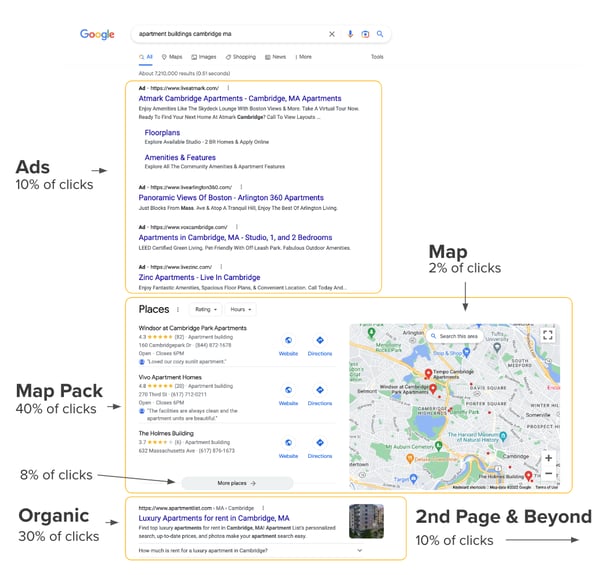This comprehensive glossary will help you plan and implement a winning reputation strategy.

In today's day and age, where information can be shared in an instant, a company's reputation can make or break its success. People no longer exclusively rely on word-of-mouth to determine where they can find the best Thai food or hair salon. Consumer perceptions are now formed by online reviews and recommendations. People trust people, so leveraging this to your advantage is important.
The concept of reputation management is about building, managing and harnessing online reviews as key assets to propel your business forward.
Below is a glossary of key terms and definitions that you are bound to come across in this field.
Trust marketing is a marketing discipline focused on capturing the power of customer feedback to build a strong and trustworthy image for your company. It's a step beyond traditional advertising methods because it recognizes that your customers trust each other more than your business’s advertisements.
A trust marketing strategy incorporates the words of your customer reviews in your marketing materials as social proof (see #6 for a definition) for prospective customers, increasing their trust in your business. Trust marketing fosters confidence, shapes perception, and rewards businesses with a solid reputation and loyal customer base.
Review volume is the amount of reviews a business receives. This has an impact on consumer perception of your business. When potential buyers see a high number of reviews, it signals to them that the business has a large and engaged customer base. A popularity signal, high review volume bolsters trust in and credibility of the brand.
This also influences local SEO. A large volume of reviews and high average ratings determine how businesses are ranked in local search results. A business with a 4.8 rating and 650 reviews will likely have greater visibility and organic traffic than one with the same rating but only 5 reviews.
By encouraging customers to leave reviews, a business can generate a steady flow of feedback and boost its review volume. While not every customer who interacts with a business will decide to leave a review, taking a proactive approach and asking every possible customer for feedback can yield positive results. In fact, it’s possible to achieve 70% review growth without even changing your conversation rate! If you’re interested in learning more, check out how to add more "reviewable events" to your customer lifecycle.
Review frequency also influences how prospects see your brand, as businesses consistently receiving reviews often appeal more to prospects and rank higher in search engines. The recency and frequency of a business’ reviews are directly correlated to how willing customers are to try out a new product or service. Newer reviews convert leads by showing that a business is active, engaged, and regularly frequented.
A BrightLocal study found that review frequency is ranked as the third most important local ranking factor, behind star rating and whether or not a review was rooted in a real customer experience. Having a regular flow of new reviews helps a brand's reputation stay current.
Review gating refers to the act of filtering out and controlling which customers can leave a public review based on the likelihood that their feedback will be positive. Normally, this means the review request process includes a step asking if the customer had a positive experience. If no, they are routed away from public review sites into private feedback forms. While this may be a tempting way to avoid getting public negative reviews, it comes with a lot of risk. In 2018, Google forbid this practice, adding the following to its review policy: “Don’t discourage or prohibit negative reviews or selectively solicit positive reviews from customers.”
This practice is also prohibited by the Federal Trade Commission (FTC) and most review sites. If suspected of gating reviews or other similar false advertising practices, a business risks fines. Recently, Fashion Nova incurred a $4.2M fine and experienced a general loss of trust across their customer base.
Customers seek genuine feedback to make their shopping decisions and review gating can lead to skewed perceptions that are harmful to the value of online review platforms. Encouraging and embracing authentic reviews, both positive AND negative, shows customers that a business is trustworthy in the long run.
User-generated content (UGC) consists of anything created by the consumer, including reviews, social media posts, and testimonials. When an individual decides to share positive UGC about a business and its offerings, it becomes direct social proof for other possible customers to see. UGC encourages active engagement between customers and a brand through more compelling content, displaying real people having real interactions and fostering a sense of community and credibility.
Distributing user-generated content such as video testimonials across your business is a form of trust marketing. Promoting reviews and testimonials across platforms such as a business’s website or social media strengthens a brand reputation, attracts new customers and helps retain the existing customer base. Video testimonials are particularly persuasive; we found that when using UGC in video ads, there is a 28% increase in conversion.
Social proof is the psychological phenomenon in which individuals look to the behaviors of others to make informed decisions on their own behavior. It can also be related back to herd mentality, that is, thinking and behaving in a way that conforms with others.
Consumers are increasingly more reliant on the opinions and experiences of others to help guide their decisions. Positive feedback from real consumers builds trust in a product or service's reliability. Social proof acts as a compelling force that sways consumers one way or the other in determining a brand’s trustworthiness.
Google Business Profile (GBP) is where your local business listing lives on Google. When you search for a company on Google, the list of reviews, ratings, details and photos that pop up are in the GBP panel on the side of the search results page. Making sure a company’s profile is optimized and includes accurate and up-to-date information is key as the quality of your GBP tends to shape the first impression of a business’ reputation.
What people see on your GBP can make or break their willingness to engage. A well-rounded, up-to-date page will help boost visibility, attract potential customers and increase overall website traffic and conversion rates. More clicks lead to higher engagement and increased visibility in local search results. There are even free tools out there that will evaluate your GBP ranking!
Reviews and ratings are living proof that people are engaging with your business. It shows that you care about your customers and what they have to say, in turn increasing customer retention.
The Map Pack, also known as the Local Pack, plays a key role in reputation management and SEO. When searching for a local business on Google, the top three business listings that show up on a map at the top of a screen is called the Map Pack.
Showing up first on Google, businesses in the Map Pack tend to get the most clicks. Here’s a breakdown of clicks on ads, the Map Pack, maps itself and organic results on Google. As is evidenced below, the Map Pack gets more clicks than Google Ads or other organic search results.

Since the most clicks go to the top three businesses in the Map Pack, the savvy marketer should work to ensure their business ranks in the Map Pack. Having a strong presence in this section of Google search results is key to a business’s success as it helps promote visibility among local searchers and buyers.
In today’s digital landscape, where consumer perceptions and reviews have so much sway, maintaining a reputation marketing strategy has become key. It’s clear that bolstering your online reputation will help attract and retain customers. People trust people, and recognizing this along with the importance of the consumer-driven insights that we outlined above is essential for a business’s success.
Heather recently graduated from the University of Vermont where she studied Business Administration with a theme in sustainability and a concentration in marketing. Born and raised in Massachusetts, she has a love for New England sports and Dunkin’ iced coffee. Outside of work, Heather loves to spend the majority of her free time in nature, whether that be hiking, biking, trail running, or skiing. She also enjoys spending time with friends and family, baking, and trying new recipes. After recently re-discovering her love for reading, she is looking for any and all new recommendations for good books!
Bite-sized, to-the-point, trend-driven local marketing stories and tactics.
U3GM Blog Post Comments